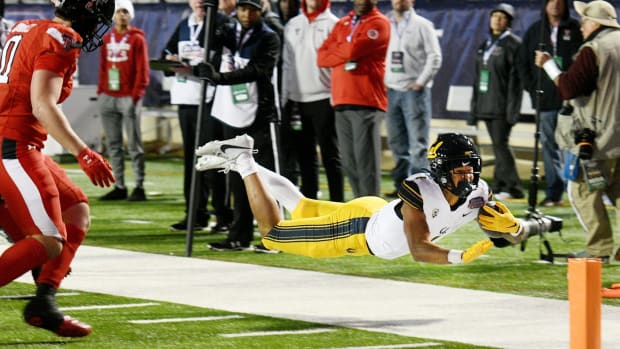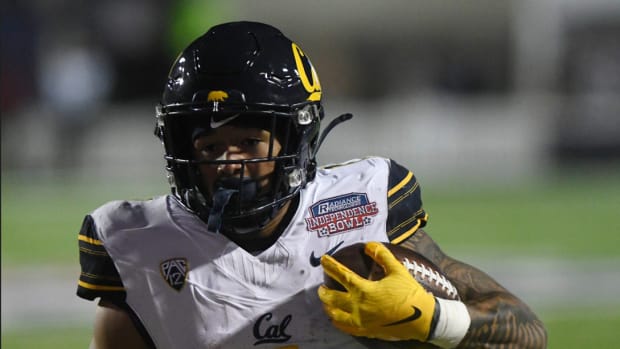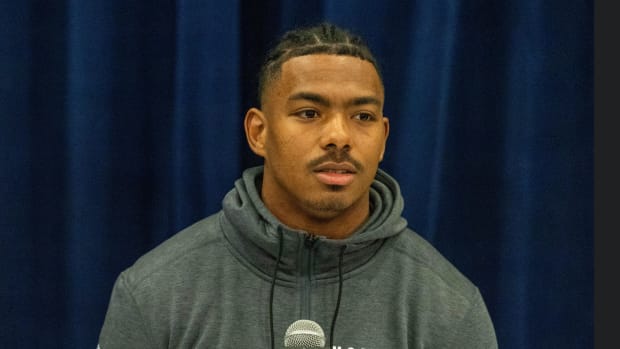Cal Football: Five Ways Preparation for a Unique Season Will Be Different
Everything about this Cal football season will be unlike anything we’ve seen before. The Bears’ schedule kicks off on the weekend of Nov. 7, when they originally were slated to play Arizona State in their third-to-last game of the regular season.
The seventh and final regular-season game will be played on the weekend of Dec. 19, just days before Christmas.
The change includes a four-week training camp that is set to begin Oct. 9 and will be unique in structure and approach.
“It’s just going to be different,” Cal coach Justin Wilcox said Thursday after getting the news that the Pac-12 presidents voted to play a fall season, six weeks after postponing it until the winter or spring.
“It’s going to be a fun challenge. I know our guys are fired up. When they got the news (Thursday) they were jacked, just like we all were. That’s part of the fun of it,” Wilcox said. “We’re going to embrace it. We look forward to getting on the field together, spending some time with the team and getting ready for that first game.”
The Pac-12 plans to release schedule by the middle of next week.
The Bears were able to begin the two-week ramp-up to training camp today (Friday), with cohorts expanded to 25 people but still a range of restrictions. Wilcox hopes those rules will be altered next week when the team is able to begin implementing daily rapid-response testing for COVID-19.
Here’s a breakdown of just how preparation for the 2020 season will look different than in a normal year:
— Ramp-up to training camp: Teams normally have mandatory summer programs that keep players in condition through July for the start of August camp. Because of the pandemic, that did not happen this year.
Most players spent the summer at home, and all of them had the option of participating in voluntary workouts. But those sessions involved mostly running and outdoor weight-lifting. Sharing a football was prohibited.
“It’s not quite the same . . . it’s just not the same as being in a summer program where it’s every day and it’s mandatory,” Wilcox said.
Players were called back to Berkeley last week in preparation for the re-start.
“So when we came back not every single guy was at the same level of conditioning,” Wilcox said. “I wouldn’t say we’re ready to play today — we’re just not. We’ll get there and we’re going to have to be real thoughtful about how we do that with each individual.”
— What training camp will look like: It will be four weeks in duration, same as usual. Otherwise, camp will be different in many ways.
“How we bring them back and prepare them to play is going to be critical. This will not be a traditional camp,” Wilcox said. “So we’re going to have to be really thoughtful and really, really efficient with our time with them and also how we prepare their bodies to get ready to play a game. Because it’s a tight window.”
There is obviously one additional set of issues involving player health this year. Wilcox said it’s a subject he and his staff have discussed almost daily for weeks.
“There are some concerns that we have for our players. Obviously, the COVID concerns, but then getting their bodies prepared to play a game,” he said. “You don’t want to put them out there if they’re not ready.”
— Practice time limits in camp: Because players are already taking (online) classes, camp constraints will more closely resemble the limits put on practice during during the week in-season.
That will mean coaches have 20 hours a week with their players. “As opposed to an unlimited amount of time in a traditional fall camp,” Wilcox said. Those limits will require adjustments . . .
— Organizational mandate: Most coaches run their practices and meetings on a strict schedule anyway. Now, with preparation time compressed, the need to operate that way will be even more urgent.
“The efficiency we do things is going to be so key,” Wilcox said. “Physically, how we prepare our bodies that there’s not a wasted moment or day or treatment session or a workout. How we administer practice, what we practice, what we install, the amount of time we practice early in camp and how we start to mesh and prepare our bodies to lead up to that first game. It’s going to be a great challenge.”
— How strategy and personnel will be impacted: Given less time to prepare for their Nov. 6 or 7 opener, Wilcox pretty much conceded that the Bears’ offensive and defensive playbooks will be somewhat streamlined so players can become expert at what they are asked to do.
“We don’t have time to be inefficient with install and, you know, put in 3,000 blitzes and call them twice,” he said. “That’s not going to be worth our time. Same thing on offense.”
Likewise, players may not be asked to play multiple roles as often as usual. More likely, the coaching staff will try to identify who can operate competently to fill different positions, especially on special teams.
“Every guy on the team who can help us win a game is going to have a role, whether it’s packaged on offense or defense or special teams,” he said. “It’s going to be really fun to take ownership for all those guys and find a role on the team because it is a unique season.”
.
Follow Jeff Faraudo of Cal Sports Report on Twitter: @jefffaraudo
Click the "follow" button in the top right corner to join the conversation on Cal Sports Report on SI. Access and comment on featured stories and start your own conversations and post external links on our community page.





